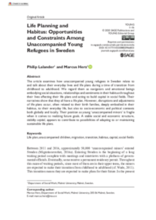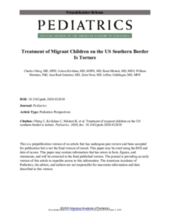Displaying 171 - 180 of 836
This article proposes a methodological workflow for data analysis by machine learning techniques that have the possibility to be widely applied in social issues.
This article examines how unaccompanied young refugees in Sweden relate to and talk about their everyday lives and life plans during a time of transition from childhood to adulthood.
The authors of this paper developed and validated a questionnaire to thoroughly assess unAccompaniEd miGrant mInorS’ physical, psychological, legal, spiritual, social and educational needs (AEGIS-Q).
This study employed a life-course perspective to reveal the dynamic developmental trajectories and concealed protective factors among college students with left-behind experience.
The present study aims to explore the associations between grandparenting styles and childhood depression, as well as the mediating role of childhood food insecurity on the focal associations among Chinese rural left-behind children.
To investigate psychopathological consequences for university students who were left-behind children (LBC) and to estimate the effects of one or both parents being migrants, the duration of left-behind experience, and parental absence during critical periods of growth on psychiatric morbidity, the authors of this study conducted an annual survey of all freshmen at a Chinese university from 2014 to 2018.
The overall aim of the present study was to expand knowledge about depression among unaccompanied refugee minors in the years after they were granted protection in Norway.
This article examines the current Common European Asylum System (CEAS), which includes several measures to protect unaccompanied minors.
This article from the journal of Pediatrics argues that the treatment of migrant children at the U.S. southern border fulfills the criteria for torture and calls on pediatricians and child health professionals to "collaborate with other advocates and advocacy organizations to forge local, national and international responses to stop and prevent torture of migrant children at the border and globally."
In an effort in bridging the gap between transnationalism and the sociology of the family, this work utilises the vantage point of transnational children to further develop the sociology of the transnational child.


